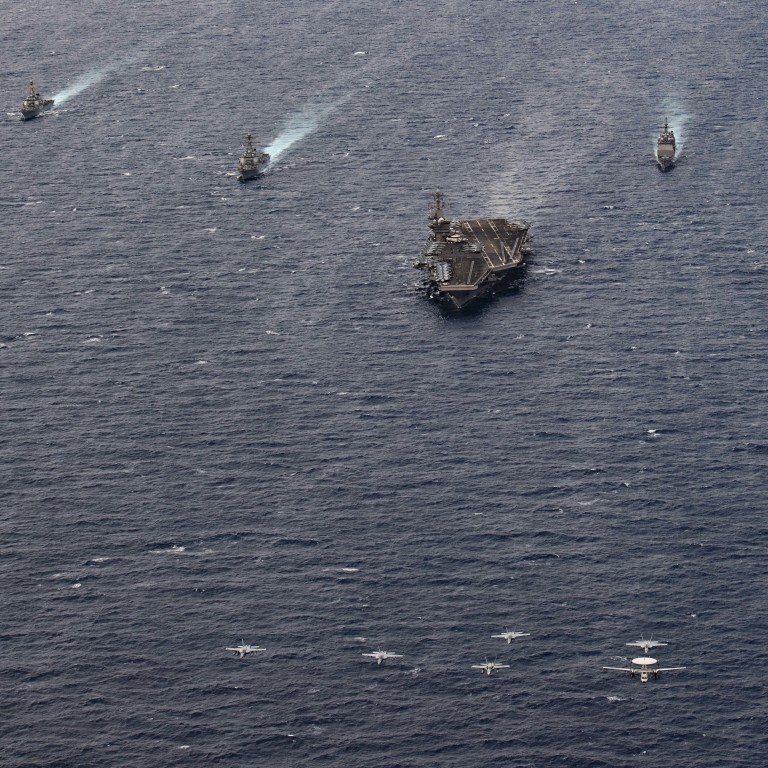
China and Indo-Pacific in US military sights as Pentagon takes fresh look at forces
- US defence secretary to examine worldwide footprint and resources, as tensions persist in South China Sea
- Review will include consultation with allies, US says
“We will consult our allies and partners as we conduct this review,” he said.
Austin has said China is “the chief pacing challenge” to the United States and the Indo-Pacific area of critical importance to the US.
“And that’s going to be a key factor in this global posture review that [Austin is] going to do,” Pentagon spokesman John Kirby said on Friday.
US’ new China task force will identify top priorities, its chief says – and tech is ‘huge’
The South China Sea is a source of ongoing tension between the Chinese and US armed forces, with China extending its reach in the contested waterway and the United States carrying out regular freedom of navigation exercises in the area.
The frictions – among others – are expected to persist, despite Biden and Chinese President Xi Jinping breaking the ice with their first phone call as national leaders on Thursday.
Kirby said the challenge from Beijing had pushed Pentagon to “take a fresh look ... at what is in the Pacific, what is the footprint both fixed and rotational, and what’s the health of our alliances and partnerships there?”
“In other words from our perspective are we doing enough?” Kirby said, according to a transcript released on Sunday.
“So there is a sharp focus on that region and China in particular.”
South China Sea: the dispute that could start a military conflict
The USS Theodore Roosevelt and USS Nimitz followed with an operation in the South China Sea on Tuesday, the second joint operation by two American aircraft carrier strike groups in the waters in seven months.
Beijing said the US moves were provocation and a threat to regional stability.
The White House has said that China will be central to its foreign policy, and that Washington will work with its partners on strategy for its rivalry with Beijing.
“The United States forces are going to sail and fly and operate in accordance with international law, as needed, to protect our security interests and those of our allies and partners,” Kirby said.
“Five of our seven treaty alliances are in the Pacific, and we take those responsibilities very seriously.”
Those US treaties are with South Korea, Japan, the Philippines, Australia and New Zealand.
South China Sea: US and allies apply pressure on Beijing but ‘they’re unlikely to go all out’
Beijing claims nearly all waters in the resource-rich South China Sea, which are also claimed by several neighbours including the Philippines, Vietnam and Malaysia.
The US does not claim any part of the sea but rejects China’s assertion of sovereignty over the area. A number of European countries have also increased their presence in the waters to push back Beijing’s activities in the region.
The French attack nuclear submarine Emeraude and a naval support ship patrolled the region earlier this week and the Royal Navy plans to send the HMS Queen Elizabeth aircraft carrier through the South China Sea and the Taiwan Strait to the East China Sea. Germany has also said it will send a frigate to patrol the Indo-Pacific this year.

